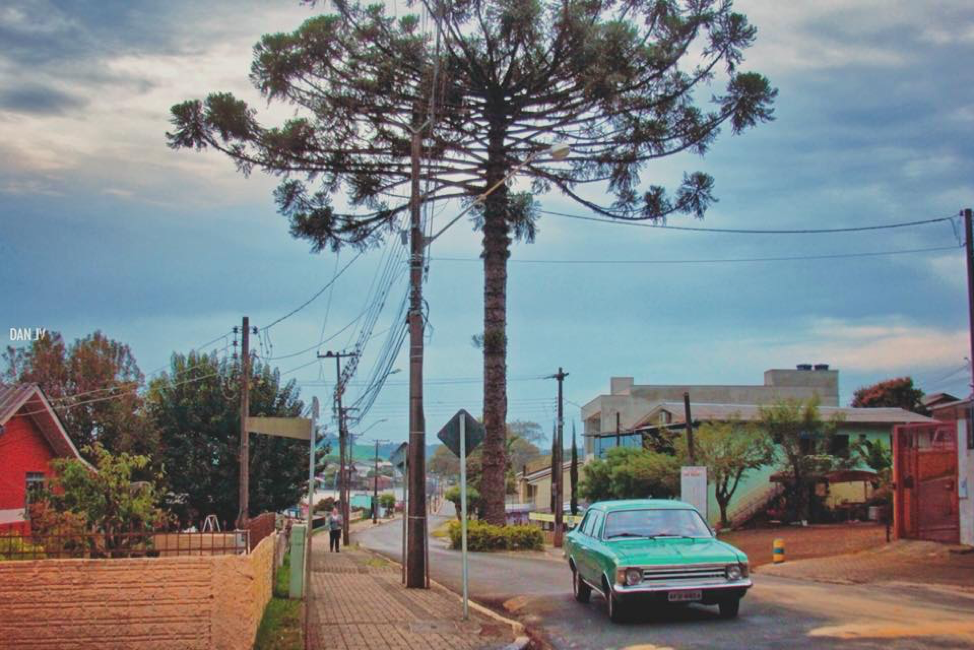Growing under the shade of ancient trees
|
The Water-Energy-Food Nexus Blog Series Delivering water, energy and food for all in a sustainable and equitable way is a major challenge faced by society. The water-energy-food nexus concept aims to address this by better understanding how interactions between water, energy and food are shaped by environmental, economic, social and political changes and how the synergies and trade-offs among them can be better planned and managed. The Water-Energy-Food Nexus Knowledge-Action Network is a network of people and organisations which fosters transdisciplinary research and communicates the importance of holistic system approaches across water, energy and food systems. Acknowledging that the nexus concept is often described as overly academic and not practical on the ground, the Water-Energy-Food Nexus Knowledge-Action Network is organising this blog series to illustrate the role of the nexus concept in addressing local and national challenges of sustainable and equitable access to resources. Understanding the perceptions and entry points with which local and national stakeholders can engage with the nexus concept is key to further implementing nexus approaches, especially in the Global South. Learn more about the Future Earth Water-Energy-Food Nexus Knowledge-Action Network. |
Growing under the shade of ancient trees
By Rafaela Flach
There is an area in southeastern South America that was once covered by towering candelabra-shaped conifers: the Araucaria angustifolia, also known as the Parana pine, is native to South Brazil, as well as in some regions in Argentina and Paraguay. Nowadays, the araucaria moist forests are reduced to less than 12 percent of its original area, and according to the IUCN Red List, the Araucaria angustifolia tree is critically endangered. Early settlements in the area relied on this tree for timber, and it was logged extensively through the 20th century. More recently, forest conversion for expansion of agriculture, forestry and hydroelectric power production further reduced the species’ habitat range and diversity. The home of the araucaria forests is now also the site of one of the largest soybean productions in the world as well as a significant number of Brazilian hydropower reservoirs.
Policies have been designed and implemented to counteract the destruction of the forests and protect the araucaria trees. In Brazil, cutting this tree without a permit is considered a crime, punishable with heavy fines, and, in some cases, jail time. The result is beautiful displays of admiration and creativity: it is not uncommon to find houses, buildings, and roads built around these trees. This strict policy framework, however, has also been the subject of strong criticism. Although the law mandates the conservation of the remaining native araucaria forests, it also provides limited economic incentives for planting new trees. As a side effect, the laws designed to stop the destruction of existing trees have also inhibited the planting of new trees. As the native forests dwindled, foreign exotic tree species, such as pinus and eucalyptus, have been introduced and thrived, as they grow faster, require less nutrients, and are highly profitable. Commercial forests have displaced the demand for native timber and further increased the pressure for land, becoming another threat to the native forests.
 Photo: City street constructed around an araucaria tree. Credit: Daniel Jaeger.
Photo: City street constructed around an araucaria tree. Credit: Daniel Jaeger.
The yerba mate
One solution for promoting the conservation of araucaria forests lies in a product that is becoming increasingly popular around the world: the yerba mate. The yerba mate was already cultivated and used by the indigenous Tupí and Guaraní people before European colonization, and is an important cultural and historical feature in Paraguay, Argentina and South Brazil. Nowadays, it is also widely consumed in Syria and Lebanon, and is part of the cultural heritage of the city of Rio de Janeiro. Yerba mate is also beloved by the trendy youth in Germany, who consume it as soda. More than 90 percent of global mate production occurs in Brazil and Argentina, in two different kinds of production systems: it is either planted by small landowners or sustainably harvested from native forests.
The Ilex paraguariensis, the mate tree, occurs naturally in araucaria moist forest. It is shade tolerant and prefers cool, humid sites. In nature, the mate and araucaria trees are a co-evolutionary match, and for this reason the araucarias are valuable for the production of mate, both in farms and in native forest areas. Farms which grow mate in agroforestry systems, in the presence of native trees, are more productive, as the trees minimise soil erosion and improve the cycling of water and nutrients. While native araucaria trees are beneficial in mate farms, the conservation of the existing araucaria forest is fundamental to guaranteeing the continued sustainable harvesting of mate from native forest areas.
In Brazil, around 30 percent of the mate is harvested in native forest areas and, according to the Brazilian Agricultural Research Corporation (EMBRAPA), the harvesting of yerba mate in native forests can be considered the most sustainable extractive activity in Brazil. Mate harvested from the shade of native forests are more genetically diverse and more protected from pests. EMBRAPA considers the harvesting of mate from native forest areas as historically responsible for the conservation of the remaining araucaria forest areas and the biological diversity of the mate tree. For small-scale farmers who rely on mate, the native forest is no longer a deterrent, but an opportunity to generate income. Highly productive and sustainable practices, such as agroforestry, not only provide income for small-scale farmers, but also increase the economic appeal of conservation.
Regrettably, the deforestation of the native araucaria forests has led to a decrease in abundance of the native yerba mate, directly threatening the livelihoods of the people who rely on the harvesting of mate from native forest areas.
 Image: Country imports and exports of mate in 2016.
Image: Country imports and exports of mate in 2016.
Source: http://atlas.cid.harvard.edu
The Araucaria + project
The Araucaria + project is an initiative that aims to promote the conservation of araucaria forests on private land while supporting small farmers to obtain better income from harvesting mate and other products. According to Victor Moreira, a researcher in this project, “The local producers are connected to a distinct market that includes companies that favor innovation and sustainability, creating a demand for commodities with traceable, sustainable sourcing. In order to access this market share, the producers adopt a sustainability standard to their harvesting systems. For that, they receive technical guidance, training and better prices.”
For consumers, the Araucaria + project is attractive because of the higher sustainability standards. Furthermore, the mate grown in native forests has higher concentrations of caffeine and theobromine (a substance that occurs in chocolate), as well as a softer taste. “For this reason, the native shaded mate from araucaria forests has a higher commercial value. This higher value allows smallholders to maintain their remaining forest through sustainable management and harvesting,” adds Victor Moreira. Through the Araucaria + project, more than 670 hectares of native forest are being conserved through sustainable harvesting, and more than 260 hectares of forests have been recovered.
Biodiversity is at the center of the water-food-energy nexus in this region. The competing land demands for the expansion of agriculture, livestock and hydroelectric power production have been the main drivers for land use change and biodiversity loss. Despite this, the agricultural and water sectors have the potential to feel the greatest impacts from the loss of the ecosystem services which are provided by the native ecosystem. These include erosion control, the protection of water sources, maintenance of genetic diversity, and habitat for native fauna. Most of these ecosystem services cannot be replaced, and are not provided by commercial forests.
The sustainable food production in preserved forests and the restoration of forests for sustainable food production increase the positive synergies between food, water and biodiversity systems. The sustainable production of mate promotes the conservation of the forest, and the forest enables the better production of mate. The long-standing ecological relationship between the mate and the araucaria trees has transformed into an association that enables small farmers to obtain income from the standing, protected forest.
 Photo: An araucaria tree at sunset. Credit: Daniel Jaeger.
Photo: An araucaria tree at sunset. Credit: Daniel Jaeger.
More information:
- https://www.araucariamais.org.br/
- Eibl B.I., Montagnini F., López M.A., López L.N., Montechiesi R., Esterche E. (2017) Organic Yerba Mate, Ilex paraguariensis, in Association with Native Species: A Sustainable Production Alternative. In: Montagnini F. (eds) Integrating Landscapes: Agroforestry for Biodiversity Conservation and Food Sovereignty. Advances in Agroforestry, vol 12. Springer, Cham
- IUCN Red List – Araucaria angustifolia
DATE
January 9, 2019AUTHOR
Rafaela FlachSHARE WITH YOUR NETWORK
RELATED POSTS
Spotlight on LMICs – Tired of Breathing in Pollutants? Time for Better Fuel Economy and Vehicle Standards
Future Earth Taipei Holds 2024 Annual Symposium
Spotlight on LMICs – The Future’s Juggernaut: Positioning Research as Anchors for Environmental Health